It is common to see in nature how birds during foraging consume a certain amount of constituent materials including structural remains of plants (Klasing, 2005). Such materials have traditionally been referred to as “FIBRE”.
-
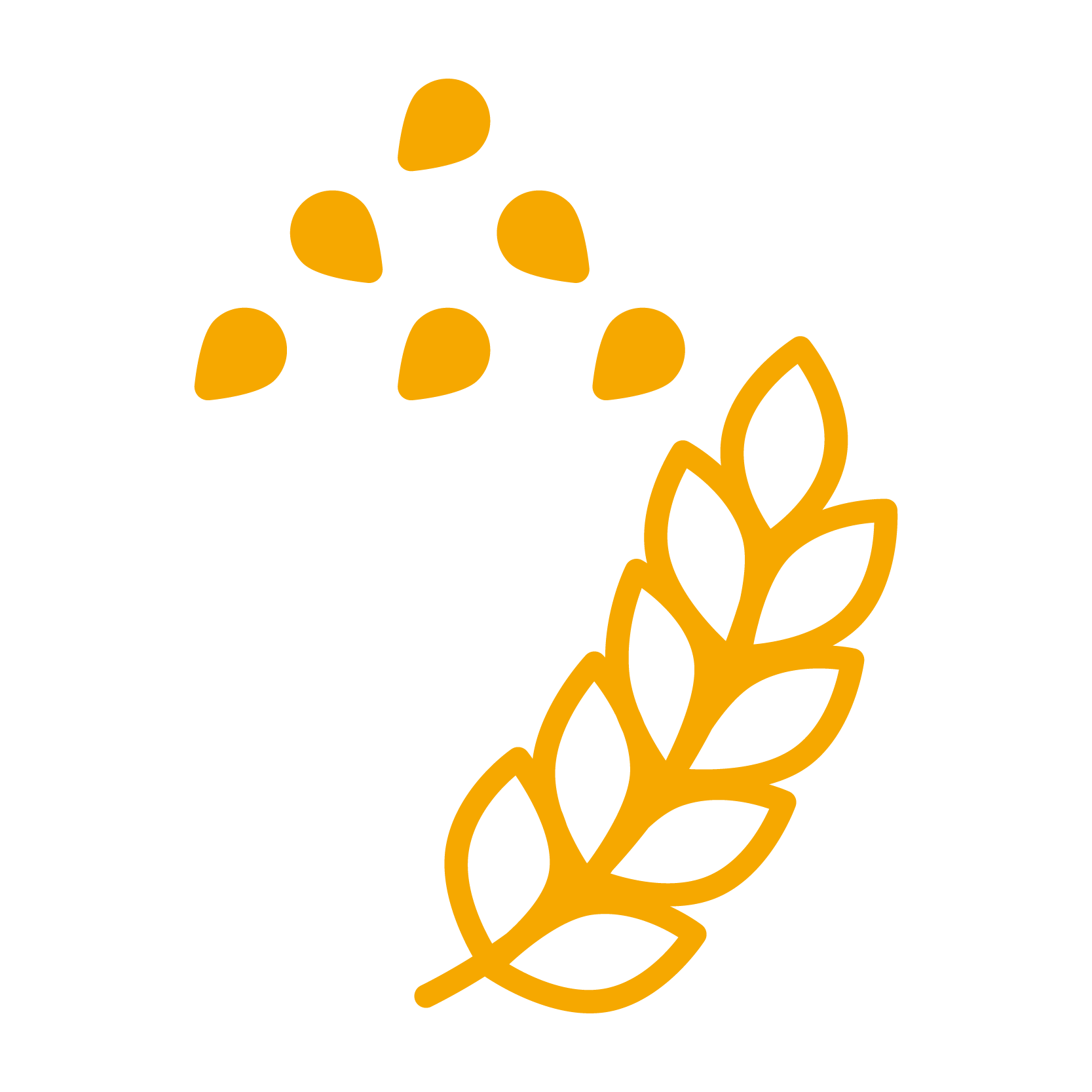
The digestive system of birds is prepared to process them based on the effect they have on gastroduodenal reflux (anti-peristaltic movements) increasing the contact time between nutrients and digestive enzymes and therefore improving their digestibility.
In poultry farming, dietary fibre (composed of non-starch polysaccharides (NSP) plus lignin) has traditionally been considered as an anti-nutritional factor associated with a diluting effect and a reduction in both diet digestibility and intake.
-

However, in recent years, research has shown dietary fibre to be a heterogeneous group of substances with different effects on poultry depending on its physicochemical characteristics and quantity.
-

For practical purposes, we can classify fibre as soluble and insoluble.

Soluble fibre is associated with:
-

An increase in digesta viscosity (which is why we include carbohydrase enzymes, primarily xylanases and glucanases, in our diets) (Choct et al., 2004).
-

The reduction of the rate of passage of digesta.
-

Reduces the digestibility of fat, protein, and starch.
-

It is fermentable, it can change the profile of the microbiota in the distal part of the gastrointestinal tract (Amerah et al., 2009; Shakouri et al., 2006).
-

Reduces feed consumption (Jha et al., 2019).

As for insoluble fibre:
-

It accumulates in the gizzard increasing retention time and regulates the flow of particles into the duodenum (Mateos et al., 2012).
-

It increases the rate at which digesta passes through the gizzard (Desbrulais et al., 2021).
-

Improved nutrient digestibility (Hetland et al, 2003, 2005).
-

Increases the percentage of dry matter in the faeces (Hetland et al, 2002).
-

Associated with increased consumption (Jha and Berrocoso, 2015; Qaisrani et al., 2012).
-

Helps prevent pecking – animal welfare (Aerni et al., 2000; Van Krimpen et al., 2009).
On a practical level, the parameter “crude fibre” considered in the formulation is due more to the need to adapt it to an analytical method and does not correspond to the physiological effects that the different fractions of crude fibre exert on the physiology and health of the animal. Thus, we can see the classification established by Van Soest in 1963.
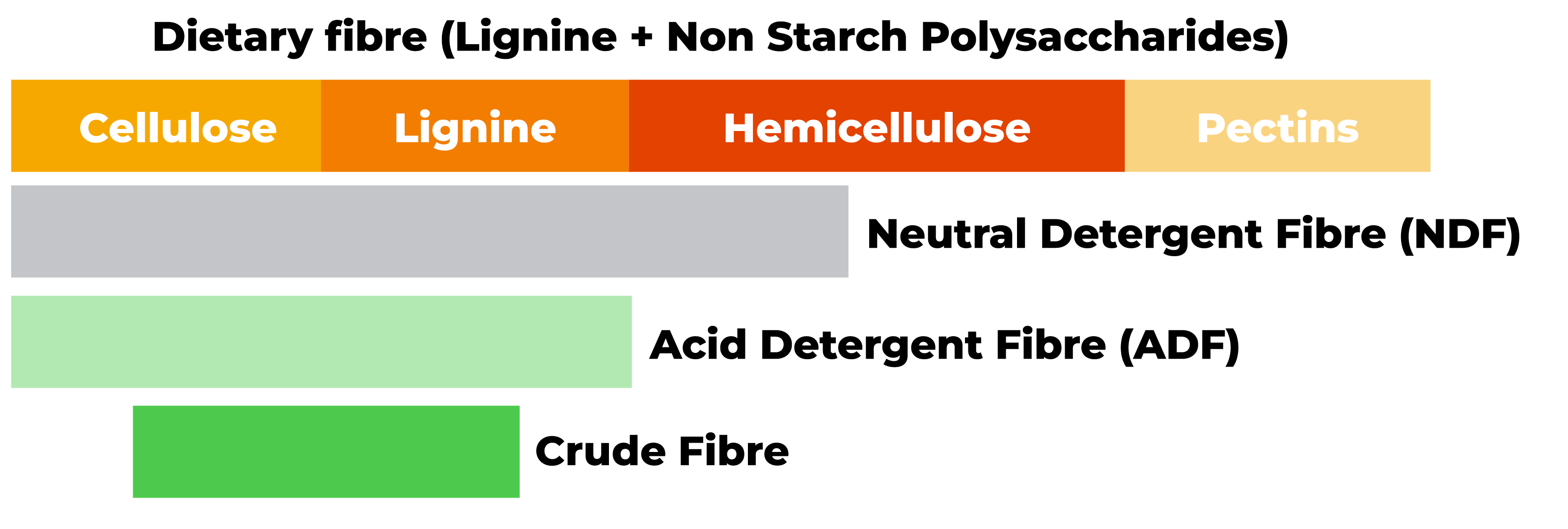
Where cellulose and lignin are considered insoluble, hemicelluloses are partly soluble, partly insoluble, and pectins are considered as soluble.
-

Therefore, the definition of crude fibre is limited as it only includes part of the total cellulose and lignin content and does not reflect the part of the insoluble fraction of hemicellulose contained in the raw materials and feedstuffs.

Why include NDF in pullet and layer diets?
In the absence of a better characterisation of dietary fibre in poultry farming, the introduction of Neutral Detergent Fibre (NDF) as a parameter is, from a practical point of view, a better approximation of the insoluble fraction of fibre.
What are the benefits of including insoluble fibre (NDF)?

1. Improves the functionality of the intestinal tract and the digestibility of the diet
The incorporation of insoluble fibre promotes the development and physiology of the digestive tract and improves the digestibility of nutrients because of increased retention time and increased secretion of digestive juices.
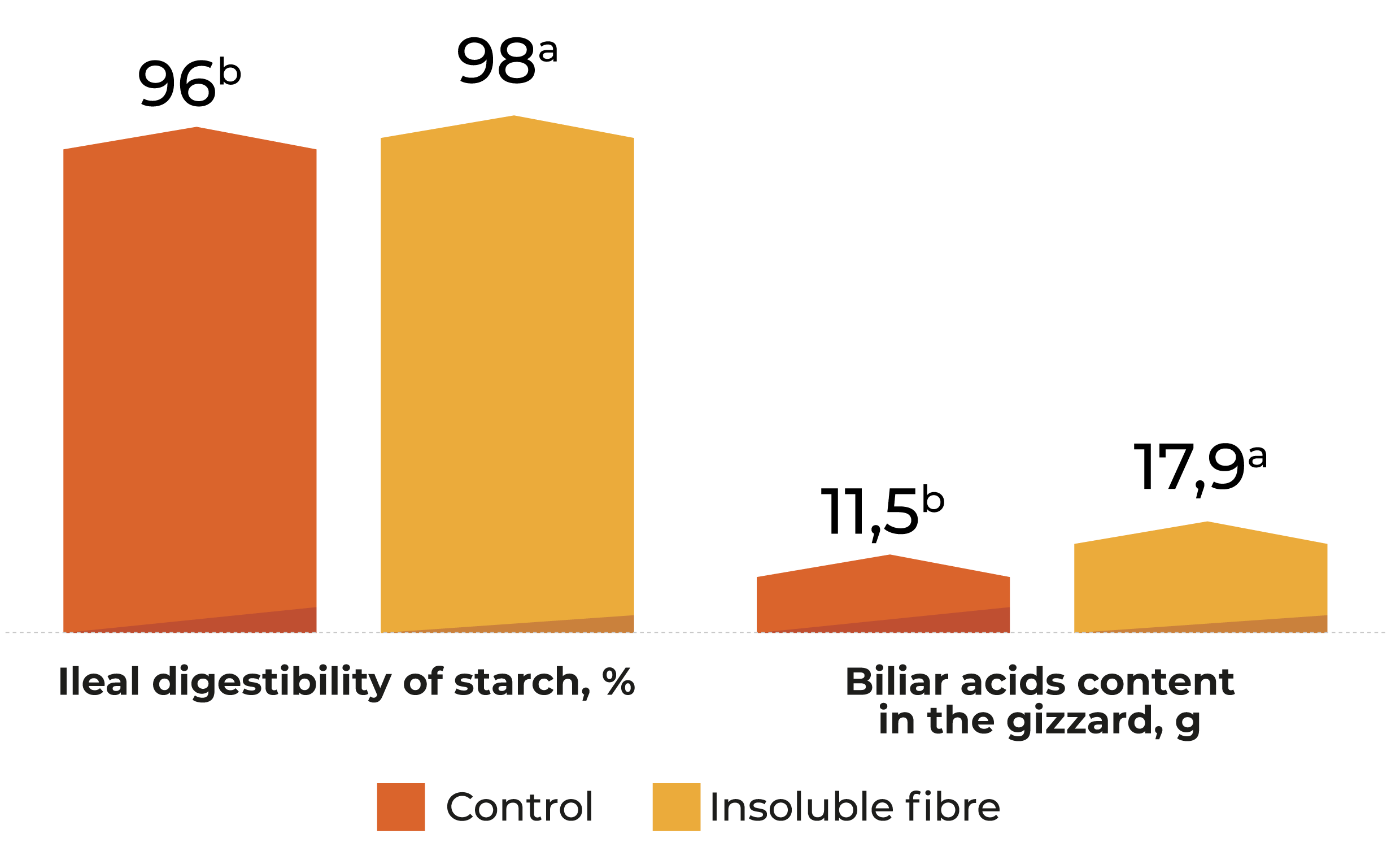
Svihus et al (2011) found that the incorporation of insoluble fibre increased gizzard content and weight as well as the birds’ intake capacity.

Why is a functional gizzard important?
-

Improves “grindability” by reducing the size of feed particles.
-

It controls the motility of the digestive system. This is why it is called “the peacemaker”.
-

Regulates the flow of particles from the crop and gastroduodenal reflux (antiperistalsis).
-

Improves intestinal secretions (bile acids and enzymes).
-

Synchronises the processes of digestion and absorption.
In general, coarse (>1mmø) feed particles (including insoluble fibres) remain longer in the gizzard, leading to the development of its muscular walls (Jiménez-Moreno et al., 2009).
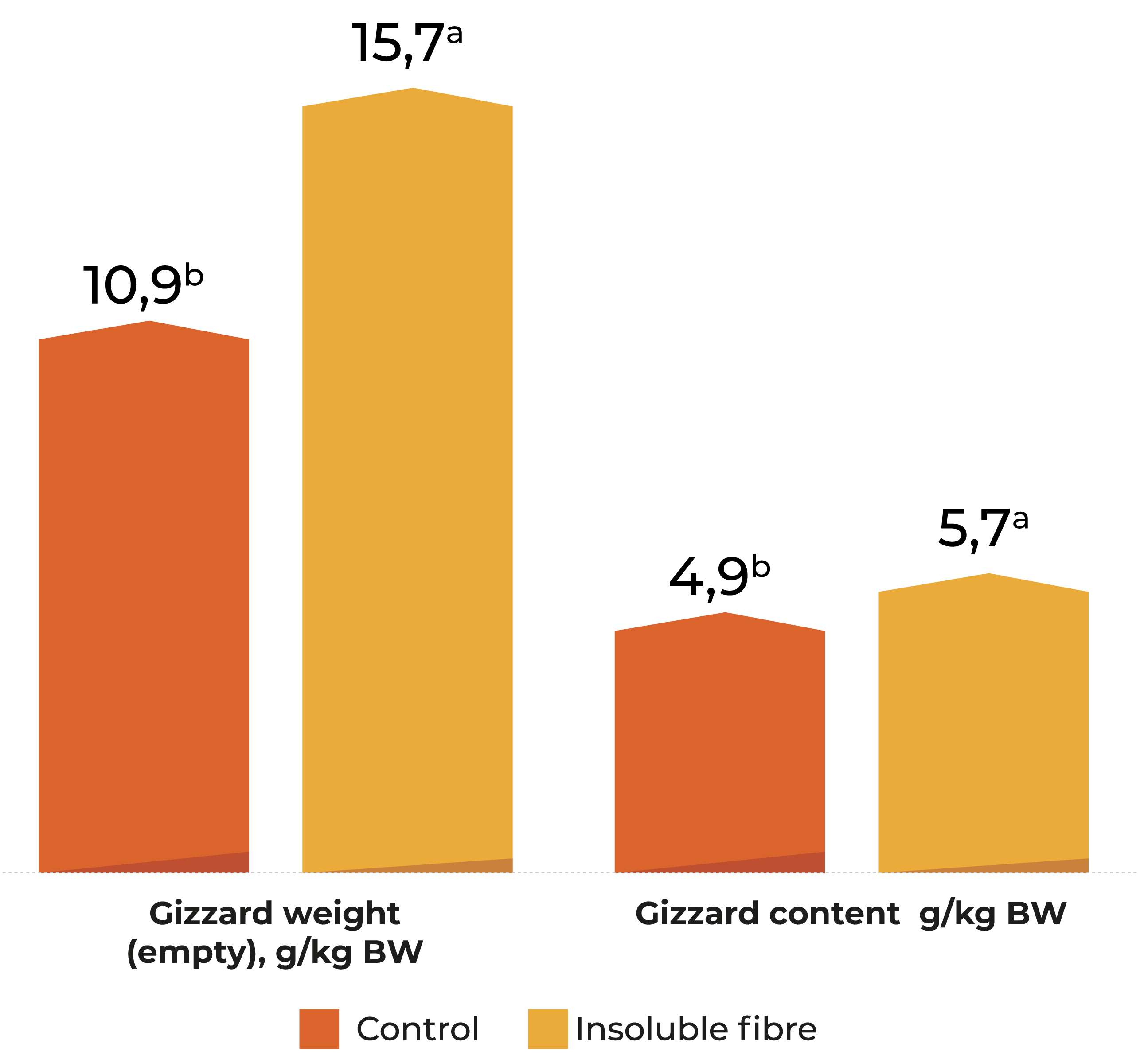
Diets deficient in structural components (feed particle size and/or insoluble fibre) cause dilatation of the proventriculus (O’Dell et al., 1959).

Even during the rearing period, the incorporation of insoluble fibre in the diet helps the development of chick TGI without affecting growth and improving energy efficiency (Guzman et al. 2015).
2. Improves bird welfare
Bird pecking is an undesirable behaviour that is determined by several factors. Among them, we can find some related to diet.
-

Several authors have related an increase in the insoluble fibre content of the diet to a reduction in the incidence of pecking and cannibalism (Bearse et al., 1940; Aerni et al., 2000; Hartini et al., 2002; Hetland and Choct, 2003b).
Van Krimpen et al. (2005) reported that pecking behaviour was reduced by feed-related factors that increased the time birds spent in the feeder (reduced energy levels and incorporation of insoluble fibre).
In the study by Qaisrani et al. (2009) it was observed that with the incorporation of increasing levels of insoluble fibre the condition of the feathering significantly improved.
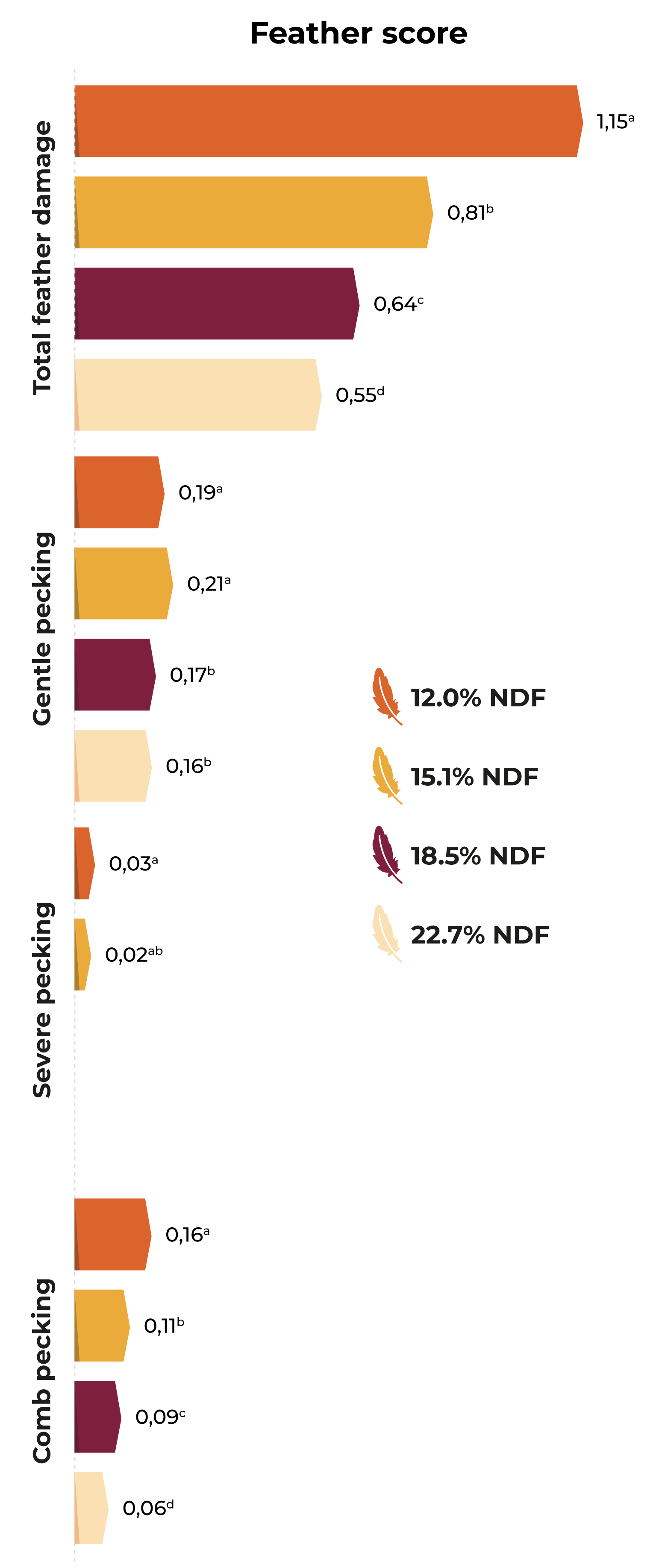
A characteristic of fibrous raw materials is their lower energy content. This is why, by reducing the energy levels of diets, we create the “space” within the formula that allows us to include raw materials with a higher NDF content.
-

Reduced energy levels in diets force birds to increase intake to meet daily energy demand, which leads to more time spent at the feeder. This reduces the time available to engage in undesirable behaviours.

3. Reduces the moisture content of faeces
Increased moisture in the faeces is related to the incidence of dirty eggs with the consequent economic impact.
-

In addition, an increase in the percentage of dry matter in the faeces helps us to keep the litter in good condition as it is necessary for the bird to express natural behaviour, thus improving its welfare.
The coarse insoluble fibre particles (>1mm) are retained longer in the gizzard improving nutrient digestibility which increases the dry matter content of the faeces.
Insoluble fibre can retain large amounts of water and reduce the solubilisation of non-starch polysaccharides (NSPs) which reduces digesta viscosity and improves faecal quality (Choct, 1997).
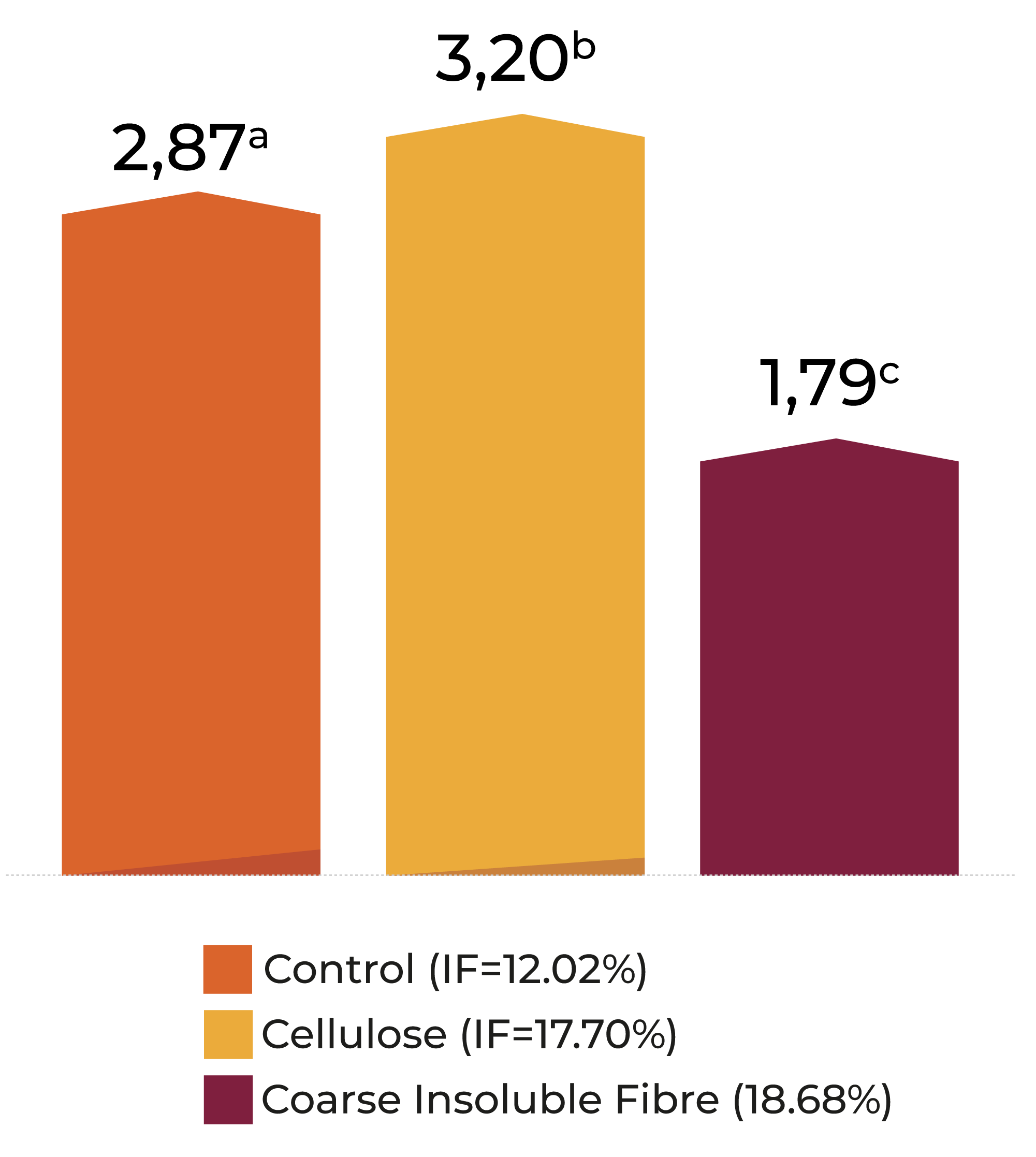
Summary
The traditional concept of “crude” fibre does not fit the physico-chemical properties of the fibre fraction of raw materials and feedstuffs. The incorporation of neutral detergent fibre (NDF), although not sufficiently precise, better defines the insoluble fraction of the fibre. Formulating with a minimum of NDF, in addition to better adjusting to the needs of the bird, can lead to reductions in the cost of diets depending on the raw materials available.
The incorporation of coarse insoluble fibre particles improves the development of the digestive tract and its functionality. As a result, there is an increase in nutrient digestibility, growth, and productivity of the birds.
Feather pecking and cannibalism is considered a behavioural deviation resulting from a lack of foraging material, as it occurs in nature. Although this behaviour
is multifactorial in origin, the incorporation of insoluble fibre has been shown to play an important role in the prevention of this type of behaviour.
The incorporation of NDF improves faecal consistency by reducing the incidence of dirty eggs and dirty feathers and contributes to the maintenance of litter quality in cage-free systems.

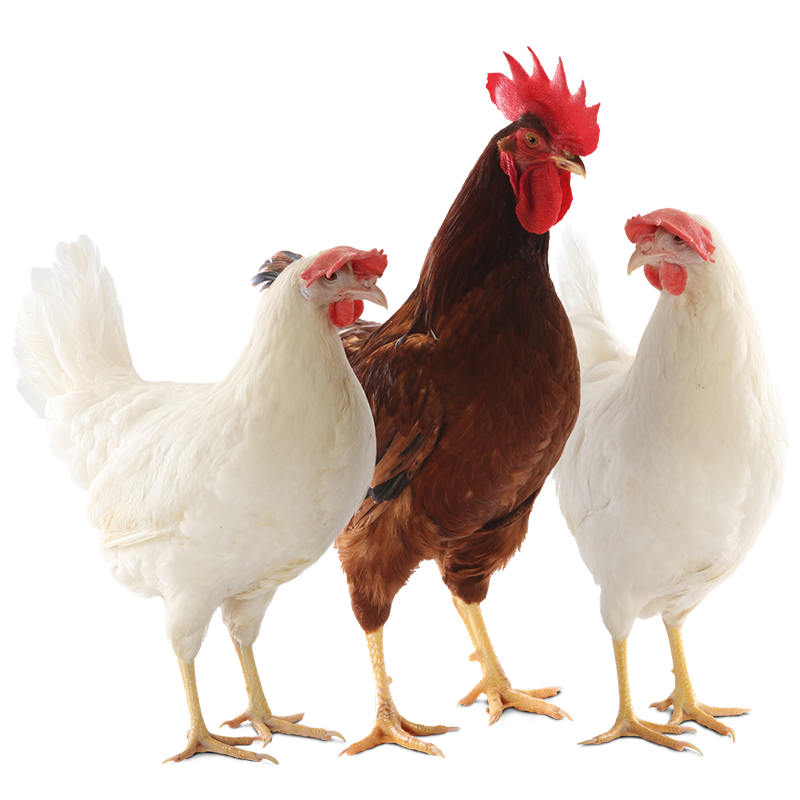
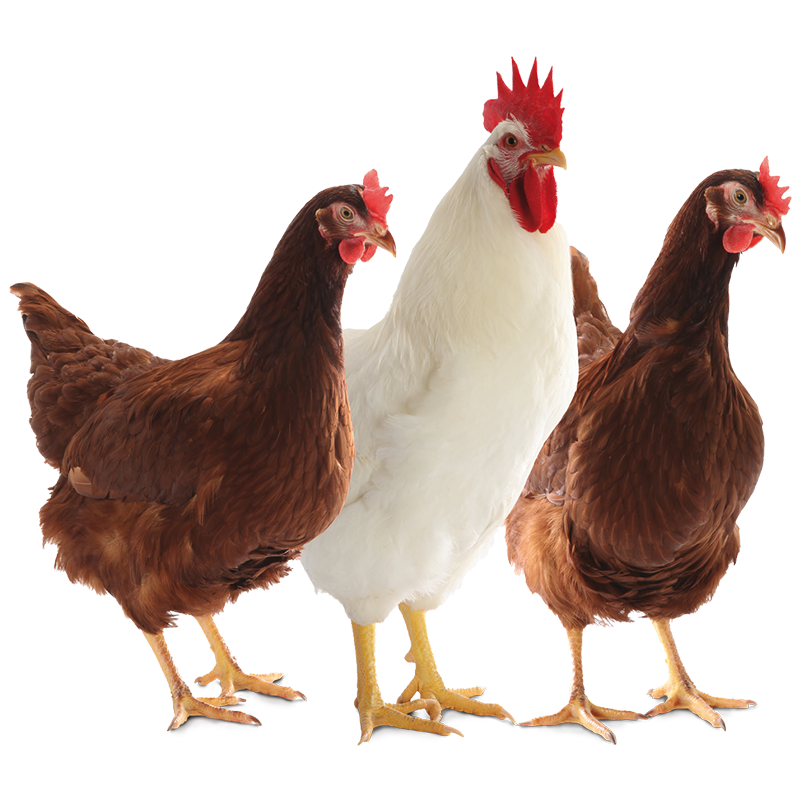
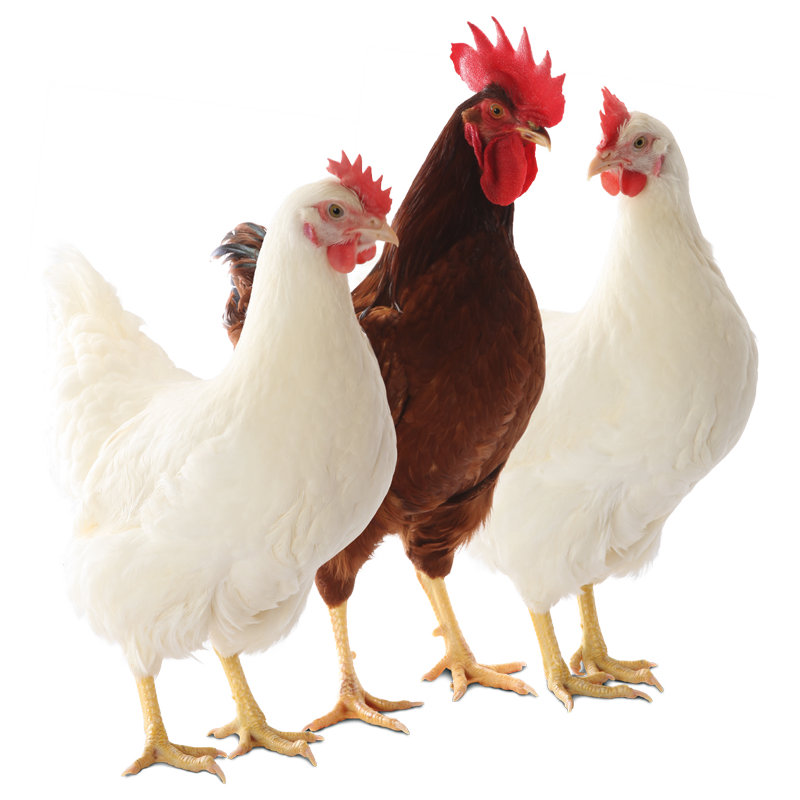
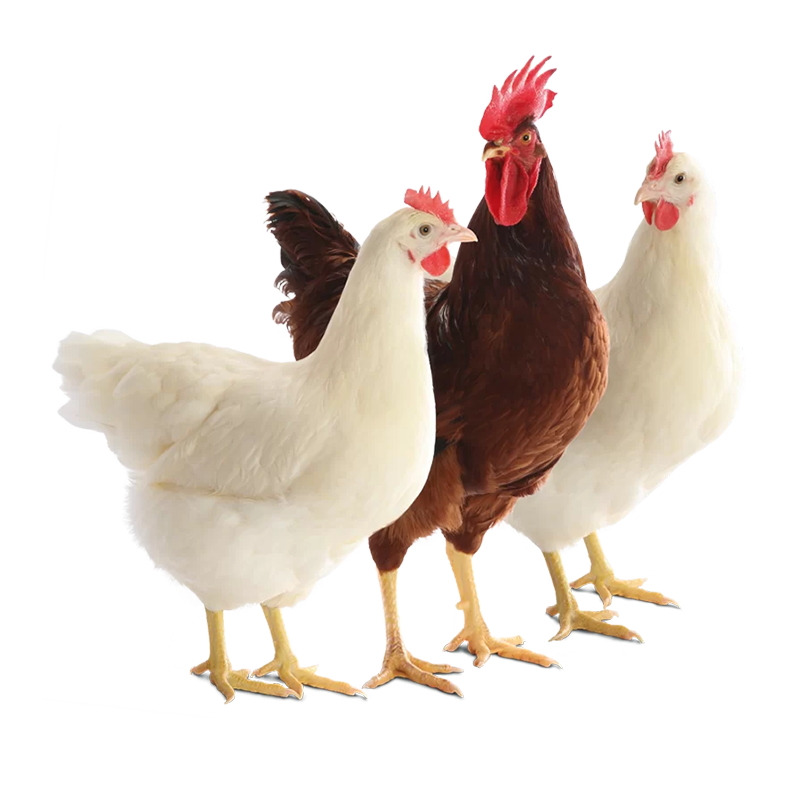
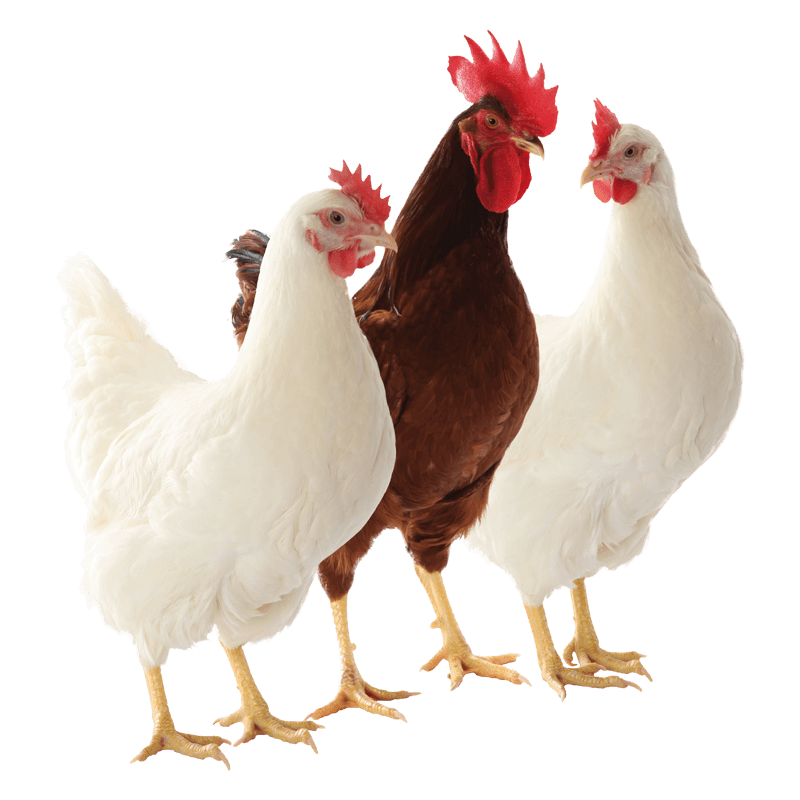

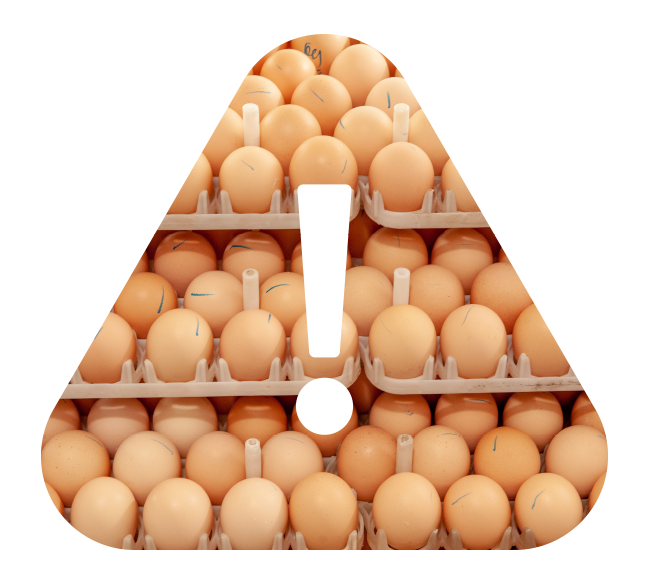


 Nutrition
Nutrition